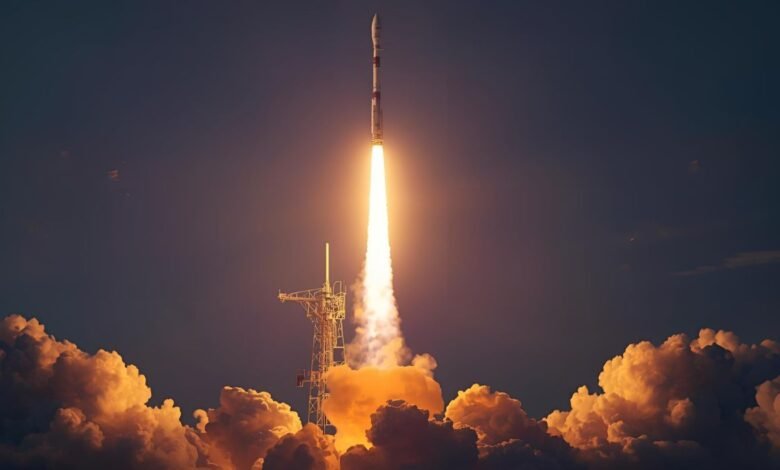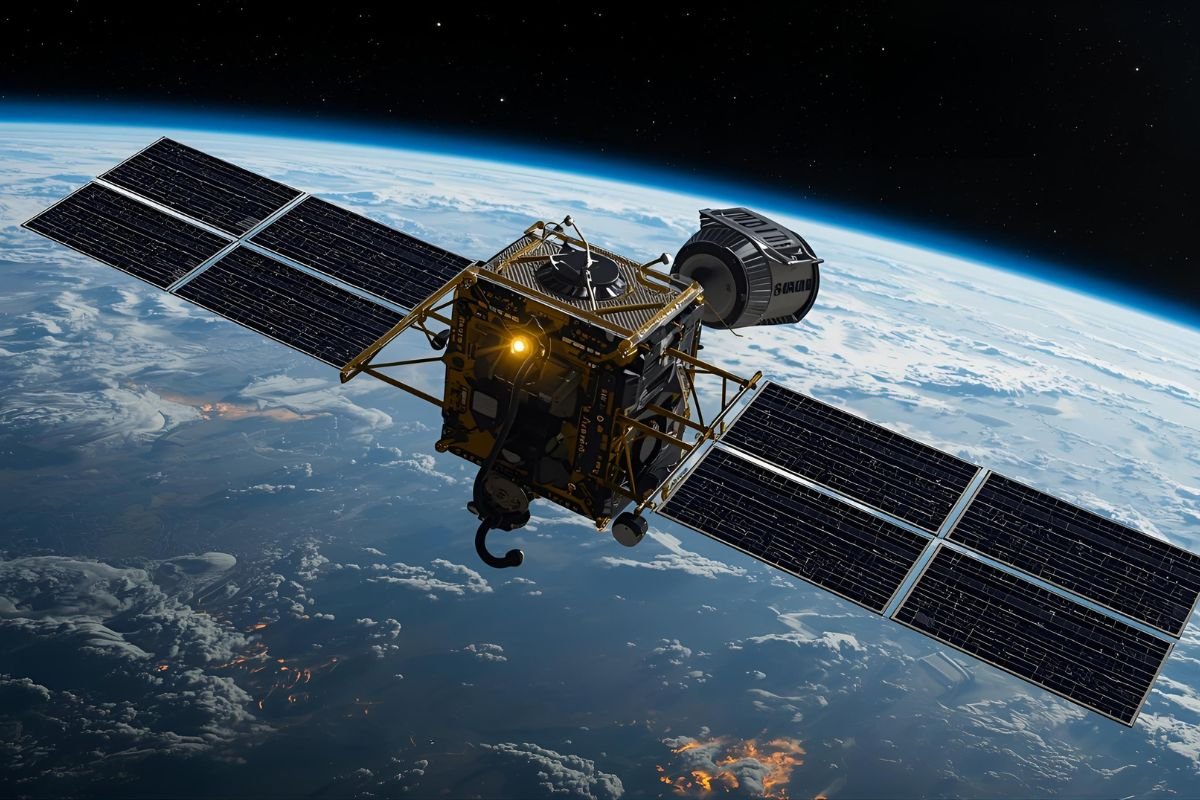
SpaceX rocket launches continue to captivate audiences worldwide as Elon Musk’s aerospace company pushes the boundaries of space exploration. With multiple launches scheduled throughout 2025, space enthusiasts eagerly await each SpaceX Rocket Launch Today for groundbreaking missions that range from Starlink satellite deployments to ambitious Starship test flights.
As of August 2025, SpaceX maintains an impressive launch cadence with the reliable Falcon 9 rocket serving as the workhorse for most missions. The next major launch is scheduled for Thursday, August 28, 2025, at 05:27 UTC from LC-39A at Kennedy Space Center, Florida. These regular launches have established SpaceX as a dominant force in the commercial space industry, with live rocket launches drawing millions of viewers worldwide.
The company’s commitment to reusable rocket technology has revolutionized space access, making missions more cost-effective and frequent. Each SpaceX mission represents a step forward in humanity’s journey to becoming a multi-planetary species, whether through satellite constellation expansion or deep space exploration capabilities.
Current SpaceX Rocket Launch Today Schedule and Updates
Today’s Launch Status
The current SpaceX launch schedule shows multiple missions planned for the coming days. Key upcoming launches include missions from Cape Canaveral Space Force Station and Kennedy Space Center, with launches scheduled for August 27th and 28th, 2025.
Recent SpaceX activities have focused heavily on Starlink missions, which continue to expand the company’s satellite internet constellation. SpaceX has launched more than 1,800 Starlink satellites in 2025 alone, demonstrating the company’s unprecedented launch frequency and operational efficiency.
Falcon 9 Mission Updates
The Falcon 9 launch today represents the culmination of years of engineering excellence. SpaceX has conducted 69 Starlink launches this year, showcasing the reliability and reusability of their Falcon 9 booster technology. Each mission typically carries between 22-28 Starlink satellites to low Earth orbit, gradually building the world’s largest satellite constellation.
Flight-proven boosters have become the standard for SpaceX operations, with some boosters completing dozens of missions. This reusable rocket technology significantly reduces launch costs and increases mission frequency, making space more accessible than ever before.
Live Streaming and Viewing Options

Official SpaceX Live Stream
SpaceX live stream coverage provides comprehensive mission coverage from pre-launch preparations through satellite deployment. The official SpaceX webcast typically begins approximately 15-30 minutes before liftoff, featuring expert commentary and multiple camera angles.
Viewers can access live rocket launch coverage through several platforms:
- Official SpaceX website and mobile app
- SpaceX’s X (Twitter) account with real-time updates
- YouTube channel with high-definition streaming
- NASA’s official channels for crewed missions
Alternative Viewing Platforms
Multiple space news organizations provide rocket launch live updates with additional analysis and commentary. These platforms often feature expert interviews, technical explanations, and historical context that enhance the viewing experience for both casual observers and space enthusiasts.
Live launch tracking websites offer real-time telemetry data, allowing viewers to monitor rocket performance parameters such as altitude, velocity, and trajectory throughout the mission.
Starship Program Updates
Recent Test Flight Developments
The Starship test flight program represents SpaceX’s most ambitious project, designed for deep space exploration and eventual Mars colonization. Recent Starship Flight 10 attempts faced weather-related delays, with SpaceX maintaining close monitoring of fuel temperatures and launch conditions.
Starship launch attempts in 2025 have encountered various technical challenges, but each test provides valuable data for future missions. Flight 10 represents the fourth Starship launch attempt of 2025, with SpaceX engineers continuously refining the massive rocket’s systems.
Technical Specifications and Capabilities
The Starship rocket stands as the world’s most powerful rocket, designed to carry up to 100 tons to low Earth orbit. Its Super Heavy booster utilizes multiple Raptor engines burning methane and liquid oxygen, representing a significant advancement in rocket propulsion technology.
Starship mission objectives include lunar missions, Mars exploration, and large-scale satellite deployments. The vehicle’s fully reusable design aims to make space travel as routine as commercial aviation.
Falcon 9: The Workhorse of Modern Spaceflight
Technical Excellence and Reliability
The Falcon 9 rocket specifications include a two-stage design with nine Merlin engines powering the first stage. This configuration provides exceptional reliability and performance for a wide range of mission profiles, from satellite deployment to International Space Station resupply missions.
Falcon 9 success rate exceeds 98%, making it one of the most reliable rockets in operation. The vehicle’s ability to perform precision landings enables booster recovery and reuse, dramatically reducing launch costs.
Mission Versatility
Falcon 9 missions encompass diverse objectives including:
- Commercial satellite deployment for various operators
- NASA missions including crew and cargo transport
- Starlink constellation expansion launches
- Interplanetary missions and deep space probes
Each Falcon 9 launch demonstrates SpaceX’s commitment to advancing space technology while maintaining operational excellence and safety standards.
Kennedy Space Center Launch Operations
Launch Complex Infrastructure
Kennedy Space Center launches utilize state-of-the-art facilities originally built for the Apollo and Space Shuttle programs. Launch Complex 39A has been modernized by SpaceX to support both Falcon 9 and Falcon Heavy missions, featuring advanced fueling systems and crew access towers.
The SpaceX launch pad incorporates innovative technologies including autonomous flight termination systems, advanced weather monitoring, and real-time trajectory analysis capabilities.
Launch Day Operations
Pre-launch procedures begin hours before liftoff, with detailed vehicle inspections, propellant loading, and final system checks. Launch controllers monitor hundreds of parameters throughout the countdown, ensuring optimal conditions for mission success.
Weather considerations play a crucial role in launch timing, with SpaceX maintaining strict safety margins for wind speeds, precipitation, and atmospheric conditions.
Cape Canaveral Space Force Station Activities
Multi-Pad Operations
Cape Canaveral launches frequently occur from multiple pads simultaneously, showcasing the facility’s ability to support high launch cadence. Space Launch Complex 40 serves as SpaceX’s primary East Coast facility for Starlink and commercial missions.
The Cape Canaveral Space Force Station provides essential range safety services, radar tracking, and communications support for all launches. This partnership enables SpaceX to maintain their ambitious launch schedule while ensuring public safety.
Historical Significance
The Florida launch site carries decades of spaceflight history, from early Mercury missions to modern commercial launches. SpaceX’s presence at Cape Canaveral represents the evolution of American space capabilities from government-only operations to thriving commercial activities.
Satellite Deployment and Mission Objectives

Starlink Constellation Expansion
Starlink satellite missions continue expanding global internet coverage, with each launch adding dozens of advanced satellites to the constellation. Recent missions have deployed 28 satellites per launch, optimizing payload capacity and orbital deployment efficiency.
Satellite internet technology represents a revolutionary approach to global connectivity, providing high-speed internet access to remote and underserved regions worldwide. Starlink orbital mechanics involve precise deployment sequences and autonomous satellite maneuvering to achieve optimal coverage patterns.
Commercial Satellite Services
Commercial satellite deployment services have become a significant revenue source for SpaceX, with customers ranging from telecommunications companies to government agencies. Each payload deployment requires careful mission planning to ensure satellites reach their intended orbits with precision.
Mission success rates for satellite deployments consistently exceed industry standards, establishing SpaceX as the preferred launch provider for critical space assets.
Future SpaceX Missions and Developments
Upcoming Launch Manifest
The SpaceX 2025 schedule includes ambitious missions spanning multiple launch sites and vehicle configurations. Future SpaceX launches will feature continued Starlink expansion, commercial satellite deployments, and potentially the first successful Starship orbital missions.
Mars mission preparations continue advancing through Starship development, with each test flight bringing humanity closer to interplanetary exploration capabilities.
Technological Innovations
Next-generation rocket technology development focuses on increased reusability, enhanced performance, and reduced operational costs. SpaceX engineering teams continuously refine vehicle designs based on flight data and operational experience.
Rocket recovery systems continue evolving, with potential developments in aerial capture methods and ocean-based landing platforms expanding mission flexibility and recovery options.
Conclusion
SpaceX rocket launches today represent the cutting edge of space exploration technology, combining reliability, innovation, and ambitious mission objectives. From routine Starlink deployments to groundbreaking Starship test flights, each mission contributes to humanity’s expanding presence in space.
The company’s commitment to reusable rocket technology and high launch frequency has transformed the space industry, making previously impossible missions routine and affordable. As SpaceX continues pushing technological boundaries, each launch today brings us closer to becoming a true spacefaring civilization.
Whether watching for the spectacular visuals, following technological advances, or supporting space exploration goals, SpaceX live streams offer unparalleled access to humanity’s greatest adventure. Stay tuned for continuing coverage of this exciting era in space exploration.
Read More: Dexter Resurrection Cancelled: What Fans Need to Know







